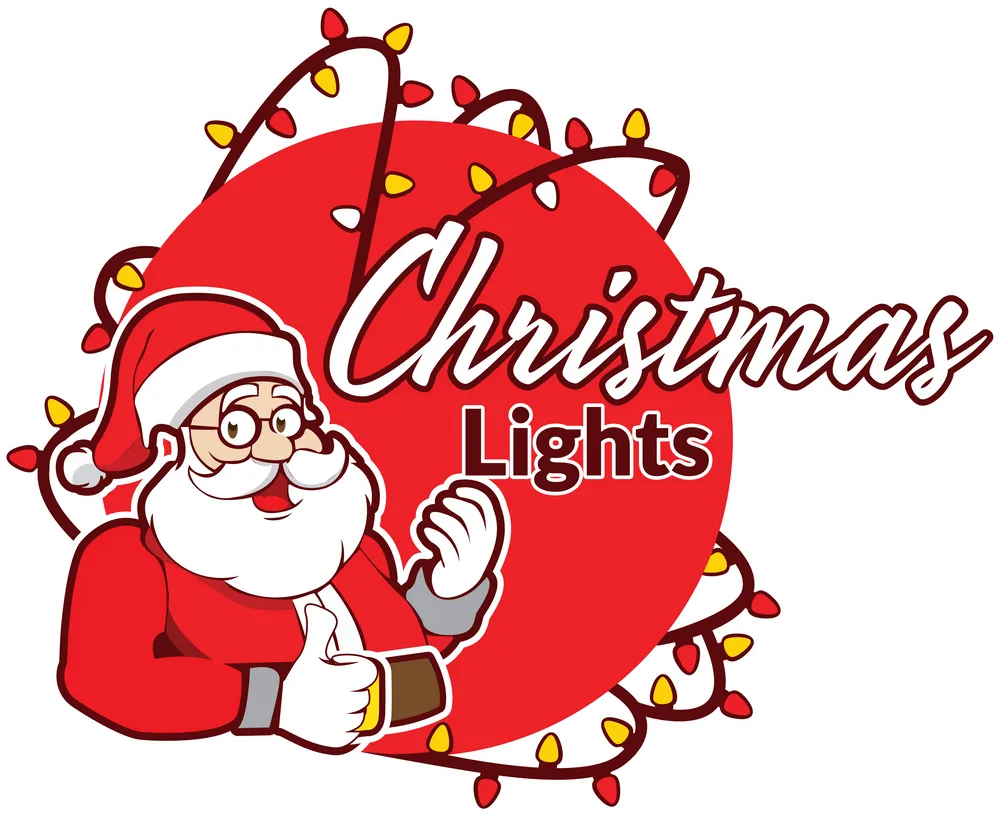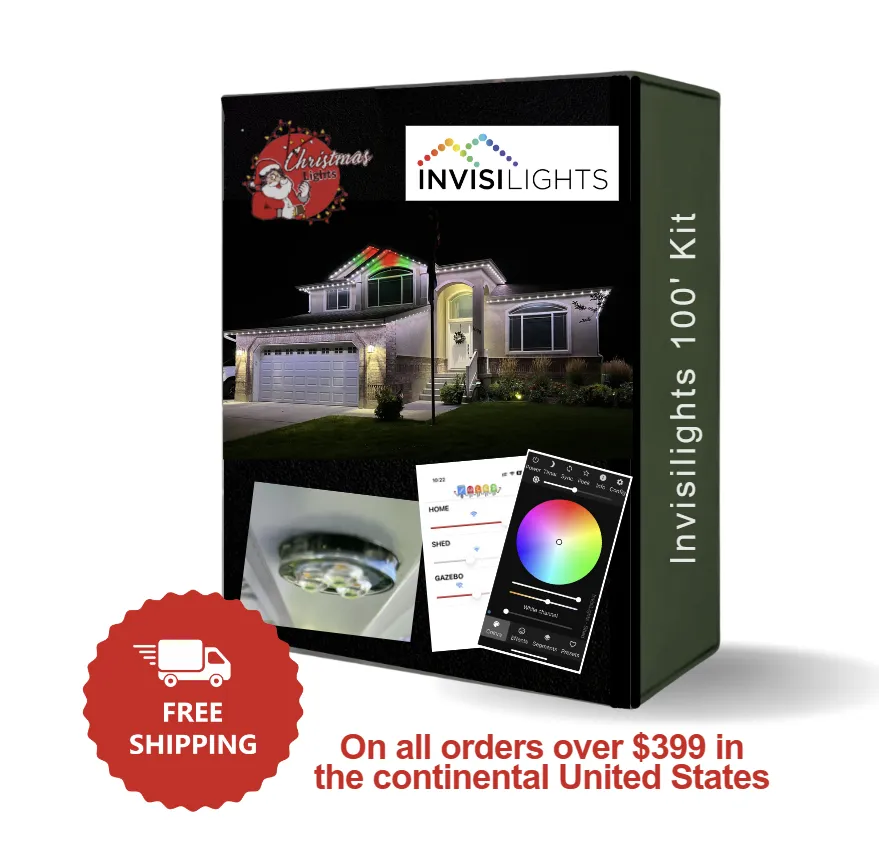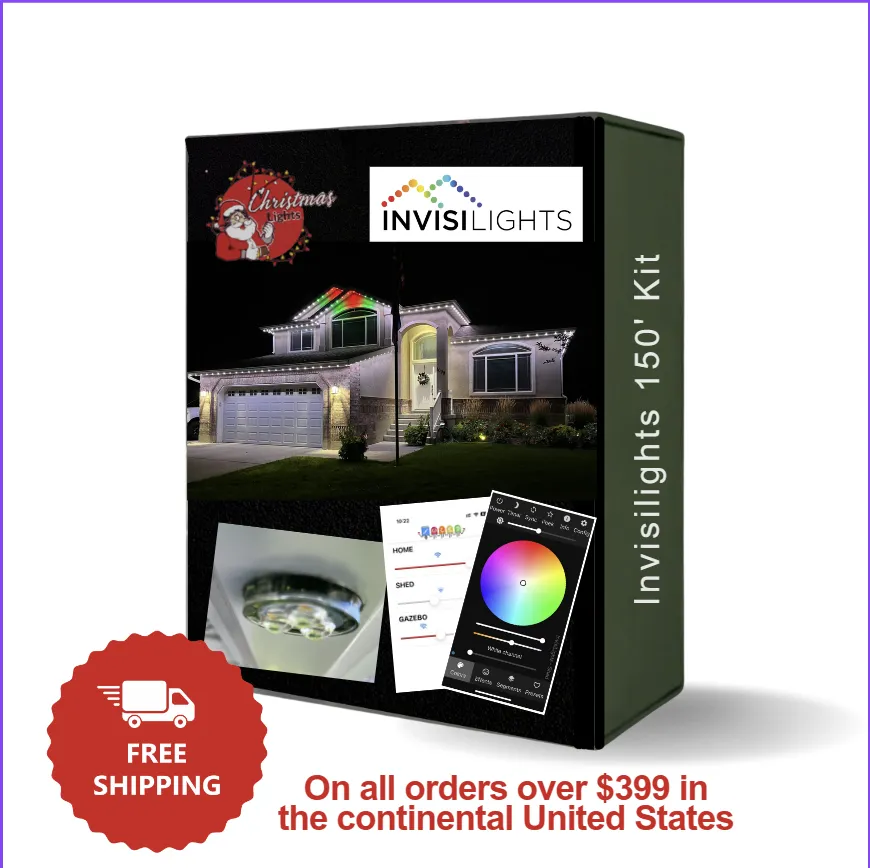Invisilights
Permanent Holiday Lighting
Customizable Lights for Any Event
WHAT YOU NEED TO KNOW BEFORE ORDERING
Total Linear footage of the installation.
This should include footage of lights and channel along with any Extensions or jumps you'll need to make
Where your controller box will be located
This is the most important step to planning out an installation, Without knowing where the controller will be you'll have no way to know the right materials to buy when it comes to extensions and accessories.
What Voltage system you want to use 24V or 36V
This is a decision you will make based on convince and efficiency, the most important factor with this will be the footage of each lighting run. If the total footage of a run is over 100' you'll need to either power inject on that run or switch to the 36V system that can go up to 200' before needing power injection.
Draw a Map
By mapping out the installation you'll be able to better understand and plan out the install giving you a better idea of what all you'll need to purchase to complete the job.
take the measurements from your map and add up the total number of materials you'll need.

For the Map out example above the total material breakdown is:
System Voltage: 36V
Color of channel: Cameo
Channel Type: Hat
Total Lighted Footage: 160'
Power injection: NO
Controller: 1
Channel: 27- 6' sticks
Screws- 200
Lights: 175
1' extensions-7
6' Extensions-2
12' extensions-2
25- extensions- 1
Y Cables- 3
End caps- pack of 10
Absolute necessities
-Controller
-Lights
-Channel
-Screws
-Extension cables
Other Accessories
-Y Cable
-End Caps
- Signal boosters
-Power injection material
When would you need to power inject?
The controller will come with 3 outputs for your lighting runs, each 36V output can do a Max of 200', the 24V system can do a max of 100'. After that max you'll need to inject power. After you do so you can go an additional 100' with the 24V or 200' with the 36V system.
Power injection is needed due to voltage drop, voltage drop happens due to the length traveled away from the power source along with the gauge of the wire. due to the gauge of wire the lights and extensions run on it drops in voltage enough at 100' with the 24V system and 200' with the 36V system to effect the lights performance requiring a addition of power (Power Injection)
Materials needed for power injection 36V
Power injection pig female pig tale
Power injection Extension cables
Power injection T Cable.
Materials needed to Power inject 24V
16/2 - 12/2 Low voltage landscaping wire
Cut and Splice T cable
Water Proof Wire connectors
Discover the Transformative Power of Invisilights: Expertly Installed Permanent Lighting Solutions
Enhance your installation offerings with Invisilights, the premier permanent lighting solution designed for seamless integration into any property’s exterior architecture.
Crafted with high-quality aluminum channels and advanced LED technology, Invisilights delivers durability and superior energy efficiency—key selling points for your clients seeking long-lasting, cost-effective lighting solutions. Our system not only provides brilliant illumination but also boosts the aesthetic appeal and functionality of any home.
Offer your clients peace of mind with our robust 5-year warranty, ensuring reliable performance and minimal maintenance needs. This warranty supports your commitment to quality and customer satisfaction, making it easier for you to sell and install with confidence.
Our flexible, programmable system allows you to meet any client’s specific desires—from subtle accents to full-scale holiday displays—making it an adaptable choice for various applications. With Invisilights, you can cater to a wide range of preferences and needs, increasing your market reach and customer retention.
Choose Invisilights for your installations and add a transformative product to your portfolio that will impress clients and ensure your services remain in demand for years to come.
Frequently Asked Questions
What exactly comes in the 150' InvisiLights permanent outdoor lighting kit?
The InvisiLights kit is comprehensively equipped to ensure you have everything you need for installation. Each kit includes:
27 sticks of 6-foot Aluminum Channel to house and protect the lighting elements.
150 feet of dynamic RGBW LED Lights, which includes 23 sets of 6-count and 14 sets of 1-count lights, allowing for extensive coverage and diverse configuration options.
2 Data Boosters to enhance signal strength across the lighting installation, ensuring consistent control and color output.
A 320W Power Supply capable of supporting up to 190 puck lights, providing ample power for even the most extensive setups.
1 GFCI Outlet Adapter to ensure safe outdoor electrical connections.
1 Controller that allows you to manage and customize the lighting effects easily.
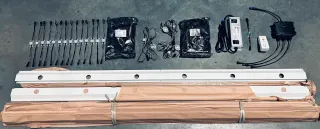
Will I need any additional components besides what's included in the Invisilights permanent lighting kit?
While the Invisilights kit comes with all the essential components for a standard installation, there are a couple of scenarios where you might need additional items:
Jumper Wires: Depending on the layout of your installation and the number of gaps or 'jumps' between the sections of lights, you may require jumper wires. These wires help bridge the gaps without losing the continuity of the light sequence, ensuring a smooth and uniform display across more complex architectures.
Data Boosters: If any section of your lighting setup is more than 15 feet away from the control box, additional data boosters will be necessary. Data boosters help maintain the integrity and brightness of the lights over longer distances, ensuring consistent performance throughout your installation.

Can I choose the color of the aluminum channel for my InvisiLights kit?
Yes, you can select your preferred color for the aluminum channel to match your home’s exterior or personal taste. Please make sure to specify your color choice in the notes at checkout when you place your order.
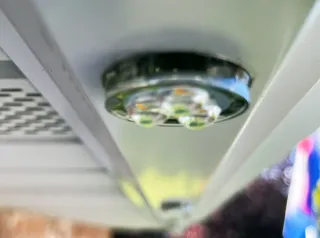
How do the included components of the InvisiLights kit enhance the lighting system?
Each component in the InvisiLights kit plays a crucial role in creating an effective and stunning lighting display:
Aluminum Channels: Provide a durable, weather-resistant housing for the LED lights, which helps in maintaining a clean and nearly invisible look during the day.
RGBW LED Lights: Offer vibrant, full-spectrum color and white light combinations, making it perfect for any occasion from festive holidays to elegant ambient lighting.
Data Boosters: Ensure that the signal remains strong across longer distances, which is crucial for larger installations.
Power Supply: Designed to efficiently handle the energy needs of the system without overload, ensuring safety and durability.
GFCI Outlet Adapter: Adds an extra layer of safety by protecting against electrical shorts and surges, particularly important in outdoor settings.
Controller: Provides the flexibility to customize and control the lighting sequences, colors, and patterns right from your smartphone or controller, adding convenience and advanced functionality to your lighting system.
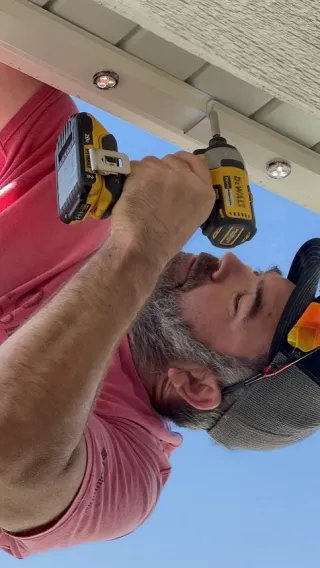
Can I use Invisilights year-round?
Absolutely! Invisilights are designed for versatile use throughout all seasons. Whether you're celebrating a special occasion, setting a mood for a party, Love your favorite sports team, or simply enhancing your home's ambiance, our lighting systems provide the perfect solution for any event, big or small.

Can I set timers and events for Invisilights?
Yes, Invisilights feature advanced programmable settings that allow you to schedule lighting for specific events and automate timers. This functionality ensures that your lighting preferences are perfectly aligned with your lifestyle, turning on and off at predetermined times without any manual intervention.
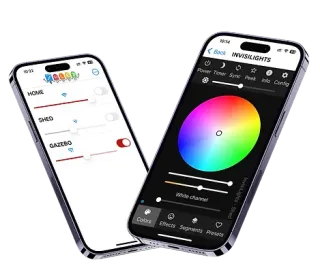
Is it possible to achieve warm or soft white with Invisilights?
Absolutely, Invisilights are equipped with RGBW technology, which includes a dedicated white LED alongside the standard red, green, and blue LEDs. This addition allows the system to produce authentic warm white, soft white, and various other shades of white with greater accuracy and intensity compared to traditional RGB systems. This capability ensures that you can effortlessly tailor the lighting to fit the desired ambiance and aesthetic of any environment, providing precise control over both vibrant colors and the subtlety of different white tones.
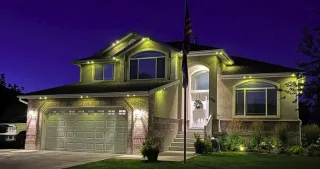
How do you ship your product?
Our products are shipped directly from our warehouse using reliable shipping carriers to ensure timely and safe delivery. Each product is securely packaged to prevent damage during transit, and we provide tracking information so you can follow your order’s journey to your doorstep.
Where are the controller and power supplies installed?
The controller and power supplies for Invisilights are typically installed in an accessible location such as a garage or utility room. These components connect to your home’s WiFi network, allowing seamless control over the lighting system via our user-friendly mobile app.

How long do Invisilights last?
Invisilights are engineered to last, with each LED bulb boasting a lifespan of over 50,000 hours. Given a typical usage of 10 hours per night, this translates to approximately 5,000 nights. This means your Invisilights could illuminate your home's exterior for nearly 14 years under these conditions, ensuring that your investment not only adds beauty but also long-term value to your property.
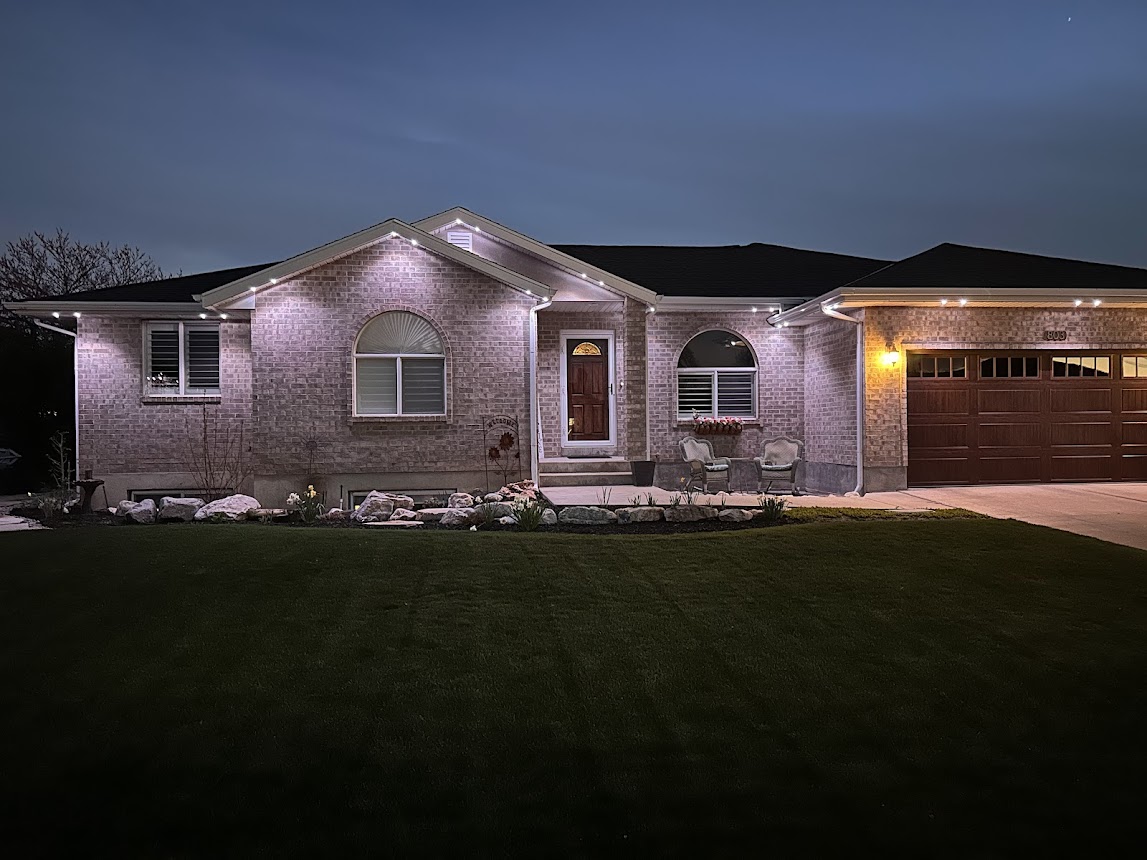
Are Invisilights dimmable?
Yes, all Invisilights are fully dimmable. This feature allows you to adjust the intensity of the light to suit various occasions, from a soft glow for a romantic evening to bright, vibrant colors for a festive celebration.

What types of custom channels are available?
Invisilights offers two types of custom channels, available in 40 different colors, ensuring a nearly invisible installation. These channels are designed to blend seamlessly with your home’s architecture, providing discreet yet effective lighting.

Can I control different zones independently?
Yes, the Invisilights system supports multiple zones which can be controlled independently or synchronized. This functionality allows for intricate lighting designs that can vary across different areas of your home, enhancing the overall impact and utility of your installation.
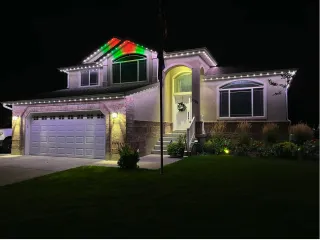
What is outdoor permanent lighting?
Permanent lighting refers to architectural-grade lighting systems that are installed permanently on your property to provide year-round illumination.
How does permanent lighting differ from traditional holiday lighting?
Unlike traditional holiday lighting, which is typically temporary and used only during specific seasons, permanent lighting is installed once and can be used throughout the year for various occasions

Discover Expert Tips on Our Blog

The $800 Daily Mistake Most Christmas Lights Companies Make
The Hidden Problem With Being "Fully Booked"
Many Christmas light installation business owners proudly announce they're booked solid through the entire holiday season. While this might seem like the ultimate sign of success, it often indicates a significant problem: your prices are too low, and you're leaving substantial money on the table.
Consider this scenario: If you're currently averaging $1,200 per Christmas light installation but could be charging $2,000 for the same work, that's $800 of pure profit you're missing on every single job. For a business doing five installations per day during the peak season, that's $4,000 daily in unrealized revenue – potentially $16,000+ per month left behind.
This isn't just theoretical. Many successful Christmas light installers across the country – from Michigan to Texas, Florida to Alabama – are consistently achieving average tickets of $2,000+ per installation. The question isn't whether it's possible in your market; it's why you haven't positioned your business to capture this value.
The Warning Signs You're Underpricing
How can you tell if you're among the many installers leaving significant money on the table? Look for these red flags:
You're booked out more than two weeks - If your schedule is filled 3-4 weeks in advance during peak season, it's a clear indication your prices are too low.
Your close rate is extremely high - Are nearly all potential customers saying "yes" to your quotes? That's actually a problem. A healthy close rate should be around 40-60%, not 95%.
You're constantly busy but not particularly profitable - Working non-stop but still struggling financially is a classic symptom of underpricing.
You're burning out - Feeling exhausted from installing too many jobs? Raising prices means fewer installations but more profit.
The Real Cost of Running a Christmas Lights Business
Many installers don't fully understand their true operating costs, which contributes to underpricing. When you factor in all expenses, it costs between $400-600 per day just to operate each installation truck. This includes:
Vehicle costs and fuel
Marketing expenses
Insurance and licenses
Equipment and supplies
Office expenses and software subscriptions
Employee wages and benefits
Understanding these costs helps you recognize the minimum amount you need to charge just to break even, let alone make a profit. This is why it's impossible to build a sustainable business on $500 installations when your daily operating costs are approaching $600.
The Mindset Shift: Selling Emotion, Not Christmas Lights
The fundamental challenge for many Christmas light installers isn't their market or competition – it's their mindset about what they're actually selling.

You're Not Selling Lights, You're Selling Experiences
The most successful Christmas light installers understand they're not selling C9 bulbs, LED lights, or installation services. They're selling:
The emotional experience of seeing children's faces light up
The pride homeowners feel when neighbors admire their display
The joy of creating memorable holiday moments
The time saved that families can spend together instead of handling dangerous installation work
The stress reduction of having professionals handle everything
When you focus your sales conversations on these emotional benefits rather than technical specifications or price per foot, customers become far less price-sensitive.
Breaking Free from Competitor Pricing
One of the most damaging mindsets is comparing yourself to competitors. Many installers justify low prices by saying, "That's what everyone charges in my area." This thinking traps you in a race to the bottom.
The truth? In every market – even Dallas, Texas, which many installers claim is exceptionally price-competitive – there are successful companies charging premium rates ($8-12 per foot) while others struggle at $2-4 per foot in the exact same neighborhoods.
What separates them isn't their market – it's their positioning, confidence, and sales approach.
Strategies to Increase Your Average Ticket
Ready to stop leaving money on the table? Here are practical strategies to boost your average installation value:
1. Create Premium Packages
Instead of quoting everything à la carte, develop comprehensive packages that include:
Roofline lighting
Tree wrapping
Bush lighting
Wreaths and garlands
Custom elements like animated displays
These packages make it easier to raise your average ticket to $2,000+ because customers are buying a complete solution rather than individual components.
2. Implement a Minimum Job Size
Many successful Christmas light installers have minimum charges starting at $800-1,000. This immediately eliminates low-value jobs that consume just as much time in scheduling and travel as higher-paying installations.
Interestingly, implementing minimums often leads to better customer relationships. The reality is that clients willing to invest in quality holiday lighting tend to be less demanding and more appreciative than those shopping solely based on price.
3. Systematically Raise Prices When Booked Beyond Two Weeks
Use this simple formula: When your schedule is booked more than two weeks out, raise your prices by 10-15%. If you're still booking at that rate, raise them again.
This approach ensures you're capturing the maximum value the market will bear while creating natural breaks in your schedule for maintenance calls and emergency service.

4. Improve Your Sales Process
The difference between a $1,200 and a $2,000 installation often isn't the actual work – it's how effectively you communicate value during the sales process.
Some key improvements include:
Answer your phone professionally - Take a deep breath and smile before answering (customers can hear it in your voice)
Pre-educate customers - Send videos and educational content before consultations
Practice handling objections - Role-play responses to common concerns like "I need to check with my spouse" or "That's more than I budgeted"
Focus on the transformation - Show before/after photos that highlight the emotional impact, not just the technical installation
Building Confidence in Premium Pricing
Many installers know intellectually they should charge more but struggle with confidence when actually quoting higher prices. Here are strategies to build genuine confidence in your premium value:
1. Surround Yourself With Success
The five people you spend the most time with heavily influence your mindset. If you're constantly around people with limited financial expectations, it's difficult to believe in premium pricing.
Seek out networking events, industry groups, and training opportunities where you can meet successful operators who routinely achieve the revenue targets you're aiming for. Sometimes this requires investing in paid mastermind groups or conferences – but the mindset shift is worth the cost.
2. Practice Your Pricing Conversations
Stand in front of a mirror and practice saying your prices with absolute conviction. Record yourself quoting a $2,500 installation package and watch for signs of hesitation or apologetic body language.
Ask your spouse or a friend to role-play customer consultations where you maintain confident positioning even when faced with pricing objections.
3. Track Your Numbers Meticulously
When you have clear data showing how many leads you generate, your close rate, average ticket value, and profit margins, pricing decisions become less emotional and more strategic.
Aim for a close rate of 40-60%, which indicates you're pricing appropriately. A higher close rate (70-95%) is actually a problem – it means you're leaving significant money on the table.
Examples of Successful Premium Pricing
Need proof this approach works? Consider these real examples:
A Michigan-based Christmas light installer averaging over $2,000 per residential installation
A Texas operation that hit nearly $600,000 in Christmas light revenue with an average ticket of $1,700-1,800
Multiple installers across the country booking $10,000+ days during peak season by focusing on premium installations rather than volume
These businesses aren't in special markets or serving only ultra-wealthy neighborhoods. They've simply positioned themselves as premium providers and confidently charge accordingly.

The Benefits Beyond Revenue
Raising your prices delivers benefits far beyond just increased revenue:
1. Less Physical Strain
Installing fewer jobs at higher prices means less physical wear and tear on you and your crew. This extends your career longevity and reduces injury risk.
2. Better Customer Relationships
Premium clients tend to be more respectful, appreciative, and understanding. They value quality over price and are more likely to become long-term customers.
3. Improved Service Quality
With fewer installations to manage, you can focus on delivering extraordinary experiences, leading to more referrals and five-star reviews.
4. More Time for Strategic Growth
When you're not constantly in the field doing installations, you can devote time to networking, marketing, and business development – activities that drive exponential rather than linear growth.
Taking Action: Your Next Steps
If you're convinced it's time to stop leaving money on the table, here are concrete next steps:
Analyze your average ticket value for Christmas light installations
Implement immediate price increases if you're booked more than two weeks out
Create premium packages with comprehensive holiday lighting solutions
Develop educational content that focuses on the emotional benefits of professional installations
Practice your sales approach until you can confidently quote premium prices
Network with successful installers who are already achieving the revenue targets you desire
Choose Profitability Over Busyness
Being "fully booked" isn't the goal – being profitable is. The most successful Christmas light installers aren't necessarily those installing the most houses; they're those capturing the most value from each installation.
As you prepare for the upcoming holiday season, challenge yourself to break free from the mindset that you need to match competitor pricing or that your market "won't support" premium rates. With the right positioning, confidence, and sales approach, you can dramatically increase your revenue without working harder.
Remember: You're not just hanging Christmas lights – you're creating magical holiday experiences. Price accordingly.

Q1: How much should I charge per foot for Christmas light installation?
Professional Christmas light installers should aim for $8-12 per foot for premium installations, rather than the $2-4 per foot many beginners charge. This higher rate accounts for your expertise, quality materials, proper installation techniques, and maintenance throughout the season. Remember that you're not just selling lights—you're selling a hassle-free holiday experience. The homes that truly stand out in neighborhoods are rarely the ones with budget installations. Your pricing should reflect the premium experience you provide.
Q2: Won't raising my prices drive away customers?
When you raise prices strategically, you'll lose some price-sensitive customers but gain more profitable ones. If you're currently booked solid with a 95% close rate, you're significantly underpriced. Aim for a 40-60% close rate, which indicates healthy pricing. The customers who value quality over price tend to be better clients anyway—they have fewer complaints, pay promptly, and refer more business. Many successful installers have doubled their prices and found that while they lost some volume, their profit and customer satisfaction actually increased.
Q3: How do I know if my Christmas light installation business is profitable?
Start by calculating your true daily operating costs, which typically range from $400-600 per installation truck (including marketing, equipment, insurance, supplies, and labor). Then track your average installation value. If you're averaging $1,200 per installation but it costs you $600 to operate for the day, your gross profit is $600. Now consider: could you charge $2,000 for the same installation? If yes, you'd increase your gross profit to $1,400 per job—more than double—without additional costs. Many installers are technically "profitable" but leaving significant money on the table.
Q4: What should I include in a premium Christmas light installation package?
Premium packages should offer comprehensive holiday lighting solutions, not just basic roofline lighting. Include:
Professional-grade C9 LED lights for rooflines and peak accent lighting
Tree wrapping services (charging per vertical foot of trunk and per branch)
Bush lighting using net lights or specialty wrap techniques
Custom elements like wreaths, garlands, and door frames
Animated or RGB lighting options for focal points
Professional-grade extension cords and connections hidden from view
Custom timer programming
Mid-season maintenance visits
Professional removal and storage options
By bundling these elements into good/better/best packages, you simplify the decision process while increasing your average ticket value.
Q5: How do I handle clients who say my Christmas light installation prices are too high?
When clients object to your pricing, resist the urge to immediately discount. Instead:
Acknowledge their concern: "I understand this is an investment."
Reframe the conversation to value: "Our installations are designed to create magical experiences that last the entire season."
Highlight differences from budget options: "Unlike lower-priced installers, we use commercial-grade products, ensure every bulb works throughout the season, and handle any maintenance issues promptly."
Offer options: "We have several packages to fit different needs. Would you like to hear about our entry-level option?"
Be willing to walk away: Not every potential client will become a customer, and that's okay. Maintaining your pricing integrity attracts the right clients long-term.
Remember that confidence is key—if you seem uncertain about your own prices, clients will sense it and push for discounts.

Q6: Should I charge differently for residential and commercial Christmas light installations?
Yes, commercial Christmas light installations should generally be priced differently than residential projects. Commercial properties typically require:
More lights and materials
Greater technical complexity
Additional liability considerations
More crew members
Different scheduling (often after business hours)
For commercial projects, consider charging a project fee rather than per-foot pricing. Commercial clients are often less price-sensitive than homeowners because they understand the marketing value of impressive holiday displays. Many successful installers average $5,000-50,000+ for commercial installations, making them extremely profitable when properly priced and managed.
Q7: When should I start raising my Christmas light installation prices?
The best time to raise prices is when you're booked more than two weeks out. This indicates demand exceeds your supply, creating the perfect opportunity to increase rates. For Christmas light installation businesses, implement this rule:
When booked 2 weeks out: Raise prices 10%
When booked 3+ weeks out: Raise prices 15-20%
For established businesses, perform an annual pricing review in August before the holiday lighting season begins. Compare your rates to operating costs, review competitor positioning, and adjust accordingly. Remember that inflation affects your costs every year—if you're charging the same rates as last season, you're effectively taking a pay cut.
Q8: How do I create tiered pricing for Christmas light installation services?
Effective tiered pricing makes it easier for clients to choose your services while naturally increasing your average ticket. Create three distinct packages:
Essential Package (Good): Basic roofline lighting with a minimum investment of $800-1,000
Premium Package (Better): Roofline plus 1-2 trees and bush lighting, typically $1,500-2,500
Ultimate Package (Best): Comprehensive display including specialty elements, animated features, and priority scheduling, $2,500-5,000+
Display these packages side-by-side in your marketing materials and proposals. Most clients will choose the middle option, which should be your target price point. This approach is far more effective than quoting individual elements separately and allows you to present higher prices confidently within a structured offering.
Q9: How do I transition existing Christmas light clients to higher prices?
Raising prices with existing clients requires a strategic approach:
Communicate early: Send a thoughtful email in late summer explaining that due to increased costs, your pricing structure has changed
Add value: Introduce new premium elements or enhanced services that justify the increase
Grandfather selectively: Consider allowing loyal clients to keep previous pricing for one more season, but with clear communication that rates will increase next year
Be confident: Approach the conversation with the assumption that most clients will understand and continue with your services
The reality is that some price-sensitive clients may leave—and that's okay. They create space for more profitable clients who value your service. Many installers are surprised to find that 80-90% of existing clients accept reasonable price increases without objection when communicated professionally.
Q10: What's the biggest mistake Christmas light installers make with pricing?
The biggest pricing mistake is basing your rates on what competitors charge rather than on your value and business needs. Your pricing should reflect:
The quality experience you provide
Your actual operating costs
The profit margin required for business growth
Your positioning in the marketplace
Many successful Christmas light installation companies charge 2-3 times more than their competitors because they've built a premium brand. They focus on creating exceptional experiences rather than competing on price. Remember that there are successful Christmas light businesses charging premium prices in every market—the limitation isn't your location; it's your mindset and positioning. The most profitable companies are rarely the cheapest option.
Copyright ©2025 All Right Reserved website designed by christmaslights.io
Terms of Service / Privacy Policy
Have questions or need assistance?
Contact us at (855)619-LITE

